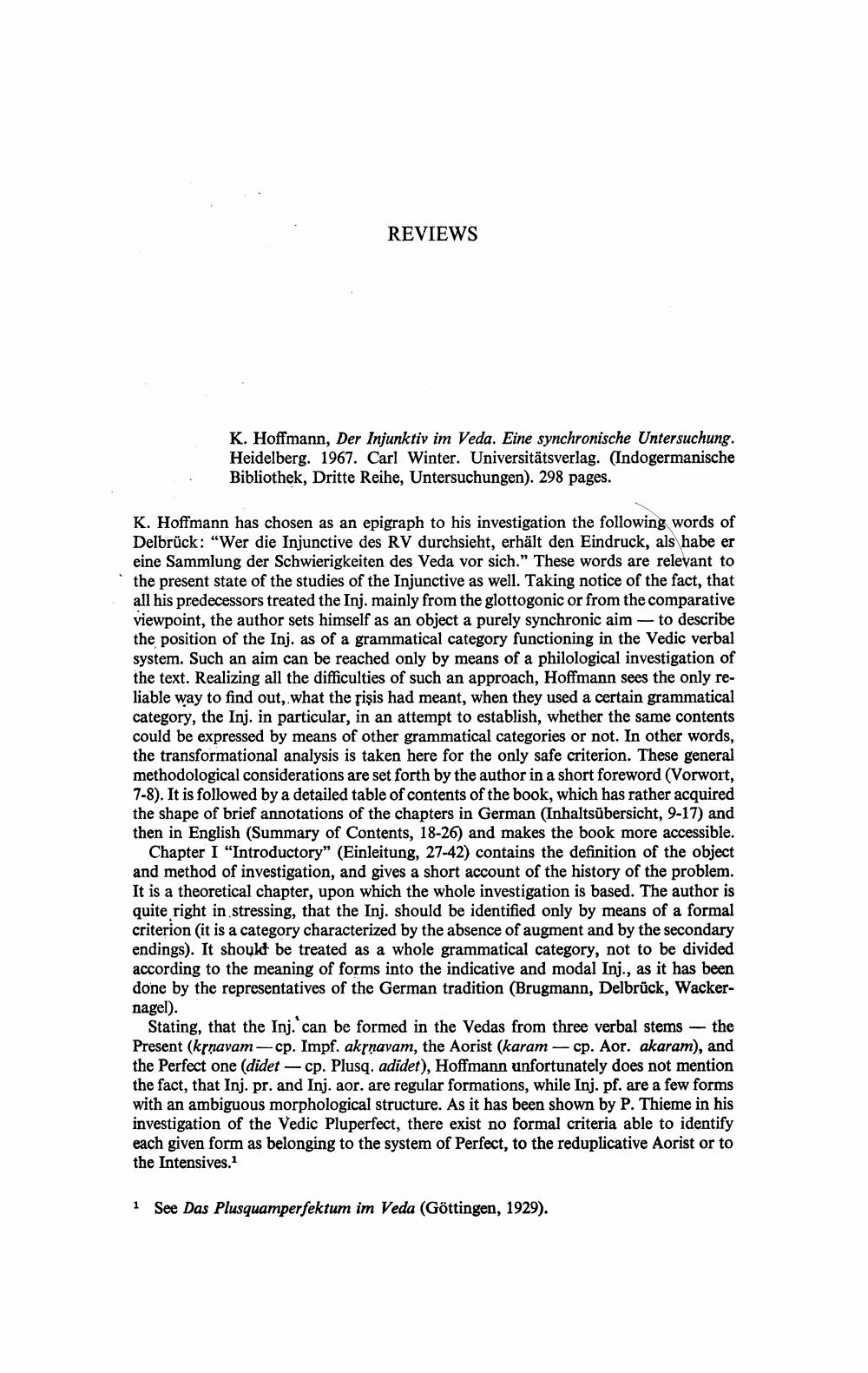Book Title: Reviews Of Different Books Author(s): Publisher: View full book textPage 1
________________ REVIEWS K. Hoffmann, Der Injunktiv im Veda. Eine synchronische Untersuchung. Heidelberg. 1967. Carl Winter. Universitatsverlag. (Indogermanische Bibliothek, Dritte Reihe, Untersuchungen). 298 pages. K. Hoffmann has chosen as an epigraph to his investigation the following words of Delbruck: "Wer die Injunctive des RV durchsieht, erhalt den Eindruck, als habe er eine Sammlung der Schwierigkeiten des Veda vor sich." These words are relevant to the present state of the studies of the Injunctive as well. Taking notice of the fact, that all his predecessors treated the Inj. mainly from the glottogonic or from the comparative viewpoint, the author sets himself as an object a purely synchronic aim - to describe the position of the Inj. as of a grammatical category functioning in the Vedic verbal system. Such an aim can be reached only by means of a philological investigation of the text. Realizing all the difficulties of such an approach, Hoffmann sees the only reliable way to find out, what the pisis had meant, when they used a certain grammatical category, the Inj. in particular, in an attempt to establish, whether the same contents could be expressed by means of other grammatical categories or not. In other words, the transformational analysis is taken here for the only safe criterion. These general methodological considerations are set forth by the author in a short foreword (Vorwort, 7-8). It is followed by a detailed table of contents of the book, which has rather acquired the shape of brief annotations of the chapters in German (Inhaltsubersicht, 9-17) and then in English (Summary of Contents, 18-26) and makes the book more accessible. Chapter I "Introductory" (Einleitung, 27-42) contains the definition of the object and method of investigation, and gives a short account of the history of the problem. It is a theoretical chapter, upon which the whole investigation is based. The author is quite right in stressing, that the Inj. should be identified only by means of a formal criterion (it is a category characterized by the absence of augment and by the secondary endings). It should be treated as a whole grammatical category, not to be divided according to the meaning of forms into the indicative and modal Inj., as it has been done by the representatives of the German tradition (Brugmann, Delbruck, Wackernagel). Stating, that the Inj. can be formed in the Vedas from three verbal stems - the Present (krnavam-cp. Impf. akrnavam, the Aorist (karam-cp. Aor. akaram), and the Perfect one (didet -- cp. Plusq. adidet), Hoffmann unfortunately does not mention the fact, that Inj. pr. and Inj. aor. are regular formations, while Inj. pf. are a few forms with an ambiguous morphological structure. As it has been shown by P. Thieme in his investigation of the Vedic Pluperfect, there exist no formal criteria able to identify each given form as belonging to the system of Perfect, to the reduplicative Aorist or to the Intensives. 1 See Das Plusquamperfektum im Veda (Gottingen, 1929).Page Navigation
1 2 3 4 5 6 7 8 9 10 11 12 ... 48
